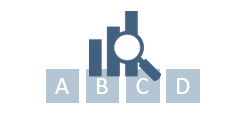



HIDDEN SALES TRENDS

PRODUCT AFFINITIES

SEASONALITY

PRICE ELASTICITIES

CANNIBALIZATION

BUYER GROUP TRENDS
Combining the ‘Art’ of Merchandising with the ‘Science’ of Analytics, advanced analytics and consumer demand modeling optimize product prices
Traditionally retailers used a “Cost-Plus” model for pricing products. If the retailer purchased a jar of peanut butter for $1, they charged the consumer $2 for the jar of peanut butter. The margin was determined in hopes that the revenues would cover expenses and provide a profit for the company. In some, slightly more sophisticated organizations, the margin was set differently based on the product category, KVI or type. The price did not reflect competitors’ prices, brand, consumer demand, the prices of complimentary items or substitutes, simply because that data was not available or usable.
Traditionally retailers used a “Cost-Plus” model for pricing products. If the retailer purchased a jar of peanut butter for $1, they charged the consumer $2 for the jar of peanut butter. The margin was determined in hopes that the revenues would cover expenses and provide a profit for the company. In some, slightly more sophisticated organizations, the margin was set differently based on the product category, KVI or type. The price did not reflect competitors’ prices, brand, consumer demand, the prices of complimentary items or substitutes, simply because that data was not available or usable.
Traditionally retailers used a “Cost-Plus” model for pricing products. If the retailer purchased a jar of peanut butter for $1, they charged the consumer $2 for the jar of peanut butter. The margin was determined in hopes that the revenues would cover expenses and provide a profit for the company. In some, slightly more sophisticated organizations, the margin was set differently based on the product category, KVI or type. The price did not reflect competitors’ prices, brand, consumer demand, the prices of complimentary items or substitutes, simply because that data was not available or usable.